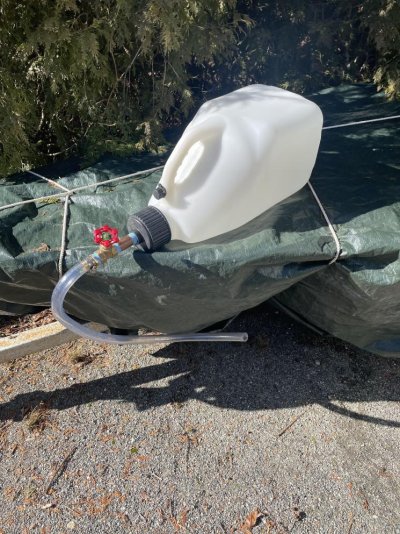mgreen
Veteran Member
- Joined
- Oct 17, 2023
- Messages
- 40
- Vessel Name
- Island Spirit
- Vessel Make
- Camano Troll 31
I have a TAMD 41 P with a hot water heater in my 1998 Camano Troll. I pulled all my coolers and heat exchangers for cleaning and inspection and replaced several hoses. I am now having a challenge refilling the coolant and am looking for ideas. I don't know exactly how much I need to put back in because I did not do a good job of keeping all the sea water separate from the coolant but so far only have 3 gallons in. If I had to guess, I feel that I need to get at least 7 gallons back in. I have tried burping the system by squeezing hoses but have not been able to get the level in the reservoir to drop down. I ran the engine for a minute but the pump must be air locked as it had no effect. It is a 2 hour trip back to the boat so I would like to have some ideas along with any tools that will be helpful.
I am considering cutting in a Tee and add another valve as near to the water heater as possible and using a vacuum pump to pull as much air and coolant I can to that place. Maybe even 2 tees, one on each hose.
Any other ideas or tricks I should be considering?
I am considering cutting in a Tee and add another valve as near to the water heater as possible and using a vacuum pump to pull as much air and coolant I can to that place. Maybe even 2 tees, one on each hose.
Any other ideas or tricks I should be considering?

